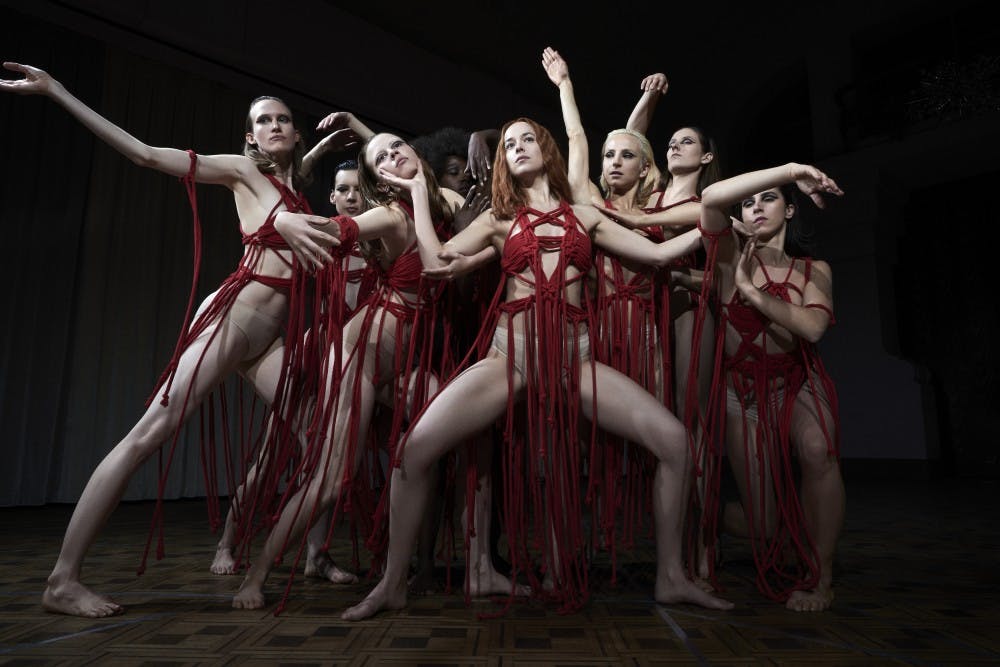Aesthetics reign supreme in Suspiria: powerful, contortionist choreography plays to a soundtrack of low–key piano melodies and the music of the dancer’s sighs, while malicious lighting illuminates the face of the cast in red. A remake of Dario Argento’s 1977 horror film of the same name, Suspiria is director Luca Guadagnino's own spin on the cult classic—with mixed success.
The movie follows Susie Bannion (Dakota Johnson), a girl from Ohio who runs away from home to join Markos Dance Academy in Berlin. Following her stunning audition, Susie quickly ascends the academy's ranks and becomes the protege of Madame Blanc (Tilda Swinton), the premier choreographer. Susie soon learns that the academy is run by a coven of witches and that the choreography she and her fellow dancers are learning are for more sinister purposes. Psychotherapist Josef Klemperer (Tilda Swinton) is suspicious of the dancers' activities. He learns of the coven’s existence through Patricia (Chloë Grace Moretz), his patient and a student at the academy.
A behemoth of a film, Suspiria clocks in at over two and a half hours. With such a lengthy run, the film bides its time, opting for more dialogue–heavy scenes than overt action. That’s not to say that Suspiria doesn’t have its fair share of horror. Dancers are slammed against walls and contorted into excruciating positions, and blood and gore flows freely, especially at the film’s climax.
Guadagnino expertly and consistently unsettles viewers through jarring cuts, close–ups, and sound changes. Although the movie is never so horrifying as to send lightning down the spine, it is disturbing like an unpleasant dream, and that discomfort only builds as the movie builds to its conclusion.

Although the film is visually and sonically stunning, it still struggles to draw its many aesthetic limbs into a cohesive whole. For example, although the film takes place in a historically and emotionally rich post—World War II Germany, it never leans into the themes of guilt and trauma as fully as it ought to. The setting feels tacked on and underutilized. The character of Josef feels similarly extraneous. It felt like his character—a Holocaust survivor who lost his wife to a concentration camp—wasn’t as mined as much as it should have been.
The movie’s denseness also weighs it down. When the credits rolled, confusion was my dominating emotion. Although I was able to grasp the general progression of the plot, I had no idea what any of it meant. The movie pondered themes of motherhood, love, guilt, and femininity, but by the time I left, I was still in the dark as to what the movie was trying to say about any of it.
Although some films like Inception and The Prestige encourage multiple viewings, they do so in a way that keeps the viewer engaged and excited to see the movie from a new perspective. Suspiria, however, is so long and exhausting that the thought of rewatching it seems more like a chore than anything else.
Suspiria is a divisive film; although it is artistically stunning and well–crafted, its substance is either confusing or non–existent. For enthusiasts of rich, dense horror, the film is a treasure trove of uncanny images, sounds, and cuts. For everyone else, however, Suspiria is simply too long, too confusing, and too exhausting for a genuinely enjoyable viewing experience.







